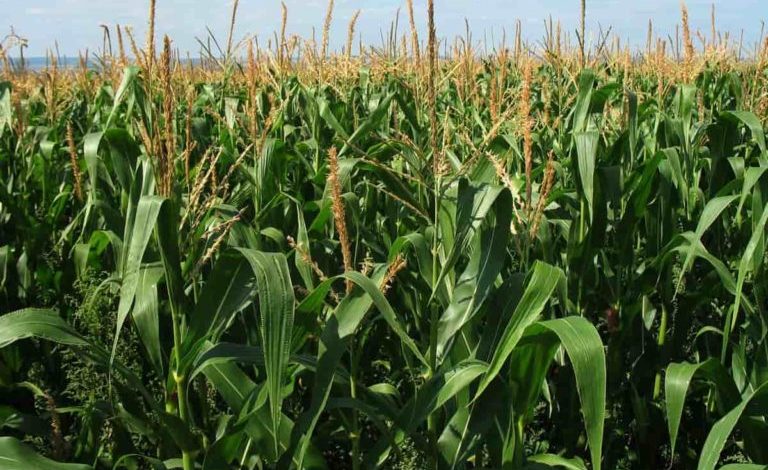How to Increase Corn Yield

With time there’s less land available for farming. Nowadays, the rates of rent for farmland are also sky high. That’s why every farmer dreams of maximizing the production of their crops, and corn yield is no exception.
Many factors determine the yield of corn crops, such as soil conditions, availability of water, wind damage, and climate. Many factors are out of our hands, but we can do many other tricks to increase corn yield production. Every entrepreneur should learn these tricks to be successful.
For your convenience, we have gathered the best methods to help you maximize the yield. These methods are time-tested and recommended by experts in the field.
1. Soil Fertility
Soil fertility is the potential of the soil to support crops. It plays a crucial role in increasing corn yield. For this purpose, farmers are advised to check the soil fertility every year or two. If your soil is not fertile enough, it will affect your corn crop yield. The good news is that you can increase soil fertility by using fertilizers. Fertilizers can be natural and synthetic.
Experts advise adding phosphate or Potassium fertilizers to increase the corn yield.
2. Optimal Dates
Planting dates play a key role in determining the output of your crops. If you plant your corn crops on the wrong date, it may decrease production. That’s why one should always consider weather, geography, and soil conditions for deciding planting dates.
Planting dates are even more important for corn yields. Research shows that there’s an ideal date for planting, and with each day, the output starts declining. The date varies each year due to weather conditions and humidity. You should consider professional advice in this matter to know the perfect date for planting.
3. Protection from Birds
As opposed to their fragile body, birds can cause serious damage to corn crops and, in turn, decrease the yield. That’s why it is an improvement step to save the crops protected from nuisance birds. The main predators of corn crops include crows, quails, pheasants, ducks, doves, and sparrows. Prevent bird damage to seeds with the help of a professional.
Using repellant sprays, scarecrows, wind chimes, and plant nestings, you can save your farm from birds. But most of the time, these methods fail to produce any results. That’s your sign to call for a professional bird protection agency. They will take care of the birds for you.
4. Soil Rotation
Like human beings require variety and flavor in life, so does soil. It gets bored with one type of crop. Planting corn crops consecutively year after year shows a decrease in the yield.
That’s why you should try soil rotation. If you have planted corn this year, try planting soybeans next. Soil rotation will help your soil to remain fertile and increase the yield.
5. Weeds
Weeds are enemies of your corn yield. You need to remove them regularly before they get out of hand. They give tough competition to corn crops for air, water, food, and sunlight. Also, they are useless to humans.
Moreover, they also provide shelter from harmful insects and crop diseases. That’s why you should remove them as soon as they appear.
6. Seed Quality
Experts say that seed Quality is directly proportional to crop output. The better the seed quality, the higher the crop yield. High-quality seeds are also free of any crop diseases.
Moreover, they have higher resistance to insects as well. So if you want to increase the corn production for your crops, always go with the best quality seeds.
7. Protection with Fungicides
Fungicides are a chemical used for protecting corn crops from fungi that can cause foliar disease. They also enhance the health of crops, thus resulting in better yield. As their name suggests, fungicides are used to prevent fungi, but it also gives additional advantages such as increasing crop yield and improved seed quality.
8. Scouting through Field
You may miss valuable information about your soil and crop if you don’t scout attentively. Scouting through your field may reveal a lot about the soil conditions, temperature, weeds, etc. It lets you develop a close relationship with your crop. Scouting will keep you updated and let you diagnose any diseases early. Scouting will have a significant effect on the yield of corn yield.
9. Proper water drainage
Your crops require a proper drainage system to maximize the corn yield. High water levels are not very helpful for crops. They may cause slow seed products and diseases. That’s why a proper water drainage system is a must.
It is proved that proper water drainage guarantees increased yield. But a farmer must do cost profit analysis before installing a water drainage system to know if it will be profitable.
10. Soil preparation
Each year you must prep your soil before planting another corn crop. Soil prepping includes testing your soil, sprinkling fertilizers, and covering it with leaves. Moreover, You can also harvest a cover crop during this time. For corn, the best cover crops are wheat, barley, and rye.
Conclusion
Increasing corn yield is considered important by farmers. After properly using the techniques mentioned above, they will certainly observe a hike in the output of corn crops.

















